Contents
Part IV: 1975 – 1985
Roy Baker
Drawing principally on Scotland Island News (SI News) archives, Part IV looks at issues around water supply and old trucks.
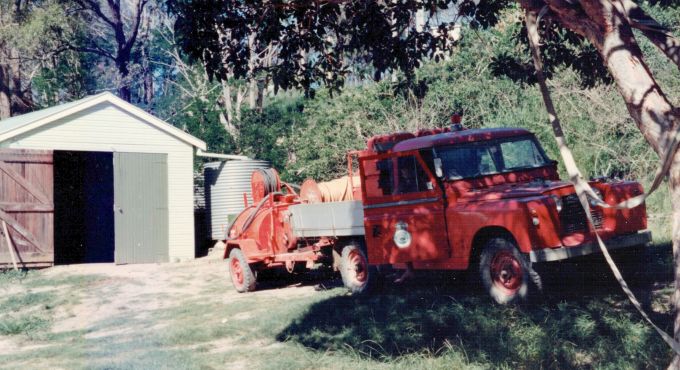 |
The Land Rover and tanker trailer that served the brigade from about 1976 until 1982.
The old fire shed (by Tennis Wharf) is in the background. Photo: June Lahm
|
Founded in 1955, the brigade’s early history is marked by a struggle for resources. By the mid-1970s the island had a fire truck and a fire boat. But such equipment is useless without water, and the island had no reticulated water supply.
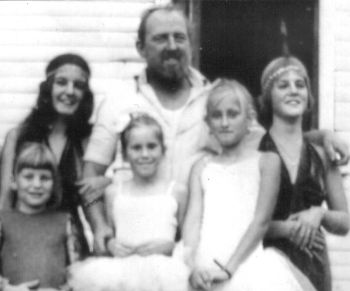 |
| Jim Duff, captain, 1971-78, photographed in 1975, alongside some of the dance group that used the old fire shed for practice. |
In 1967 residents had voted 22 to six against mains water. The absence of city water on the island meant that a dry period could leave islanders’ tanks perilously low, giving the brigade little or no firefighting capacity. Even today it is essential to the island’s fire defences that householders keep their tanks well topped up.
As late as 1973 Warringah’s failure to provide the island with an emergency water supply was a source of rancour for residents. But then, sometime during the late 1970s, a water tank was installed just above Bells wharf.
Fed by a pipe from the mainland, the tank was intended for the sole use of the brigade. But it rapidly became apparent that locals were helping themselves.
Things came to a head around the time of the 1980/81 fire season. At the time Sydney was experiencing the worst drought in living memory, and the summer saw an abnormally high number of Total Fire Ban (TOBAN) days. In the absence of a viable alternative, islanders were tapping the brigade storage tank. And, complained SI News, they were doing so ‘to a critical degree’. ‘Water raiders can threaten fire-fighting’, ran the headline. Yet the brigade appears to have been quite magnanimous, tolerating the taking of some water for household purposes, provided the reserve was never left more than half empty.
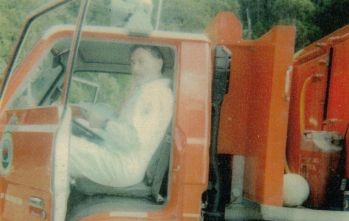 |
Bruce Lane, the brigade’s longest-serving captain (1978-88).
This photo was taken towards the end of his stint.
|
Even so, the brigade was evidently worried. ‘Someday the whole bloody island could burn down’, opined one member. Indeed, the previous season had seen numerous illegal burns on the island, including one at the top of the island which consumed around half an acre. Fortunately the brigade was at the scene within eight minutes. Even Leicester Warburton, then editor of this august journal, had a close escape when a pot belly stove flue set fire to his roof.
Adding to its problems, the brigade was having to make do with a 1960s Land Rover, towing a 900-litre tanker trailer which took 15 minutes to fill from the Bells tank. By 1982 the Land Rover was experiencing more and more mechanical problems and the time had come for a new truck.
But how to fund it? The brigade’s answer was to enter a competition, run by Channel 7, which was offering two Land Rovers to the brigades making the most persuasive submission for assistance. Unfortunately the island lost out to Lake Munmorah and Brooklyn brigades who, it transpired, didn’t have any mobile equipment at all.
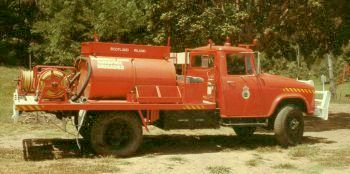 |
|
The International Harvester AB160 truck
that arrived on the island in 1985.
|
Fortunately help was to hand. In 1982 SI News announced the imminent arrival of a new Toyota Land Cruiser. What’s more, in March 1985 long-serving fire captain Bruce Lane announced the arrival of a 2,300-litre tanker.
But it seems that this didn’t last long, because in November of the same year SI News reported that it had been exchanged for an ‘upgraded AB160 tanker with a crew cabin’.
The AB160 was a truck manufactured by International Harvester and which had gone into production in Australia in 1961. The age of the model supplied to Scotland Island is unknown but, according to John Travers, equipment officer at the time, it wasn’t the best of trucks.
‘I’m not sure it had any brakes’, he recalls. What’s more, according to John, it had problems starting. Apparently the brigade’s answer was to always park the Toyota Land Cruiser behind it, so that the Toyota could give the larger truck a good shove, should it be needed.
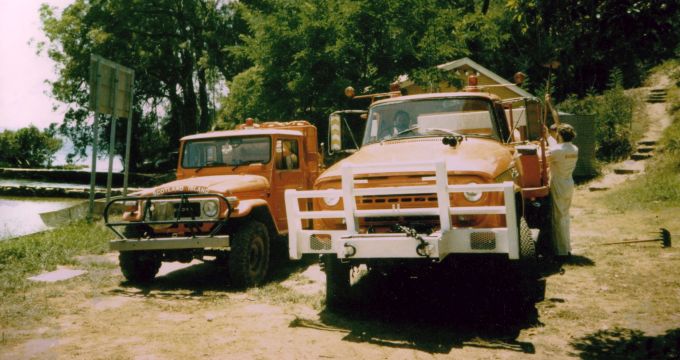 |
The Toyota Land Cruiser, alongside the AB160.
|

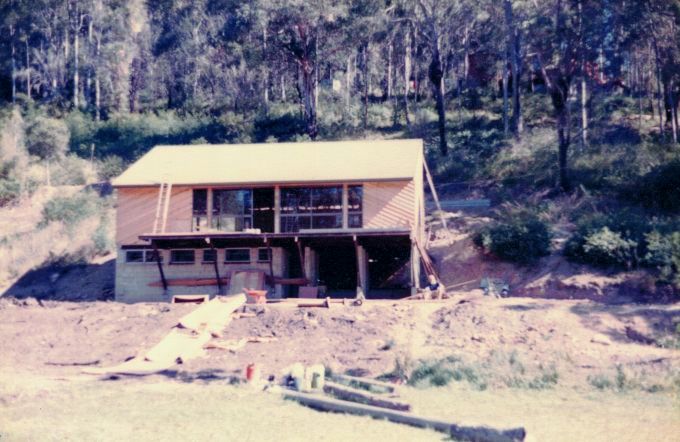 |
| The community hall during construction, 1981-2 |
17 July 2022 will mark the 40th anniversary of the official opening of the Scotland Island Community Hall. This was built using volunteer labour supplied by residents.
In order to mark the event, the PON, in association with Oneill Photographics and the Scotland Island Recreation Club, is preparing an oral history of the island. The idea is to photograph and interview current residents who were around at the time of the hall’s construction. Each interviewee will be invited to sit for a professional portrait photograph (free of charge). At the same time a short interview (sound only) will be recorded (approx 15 minutes).
The interview will focus on the part the community hall has played in island life over the last 40 years, as well as how the island and community have changed and how they have remained the same. The photos and interviews will be used as part of the celebration of the hall’s anniversary.
To be considered for interview you must:
- have been living on or regularly visiting Scotland Island in 1982 (eg as a weekender or holidaymaker), and
- be currently living on (or regularly visiting) the island.
It does not matter if you were not involved in or do not remember the building of the hall (eg you were a child on the island at the time), or if you moved away from the island for some of the intervening 40 years, as long as you live on (or regularly visit) the island today.
If you feel that you qualify for interview and are interested in taking part, please email me at editor@scotlandisland.org.au. Interviews will be conducted during the coming months.
Roy Baker

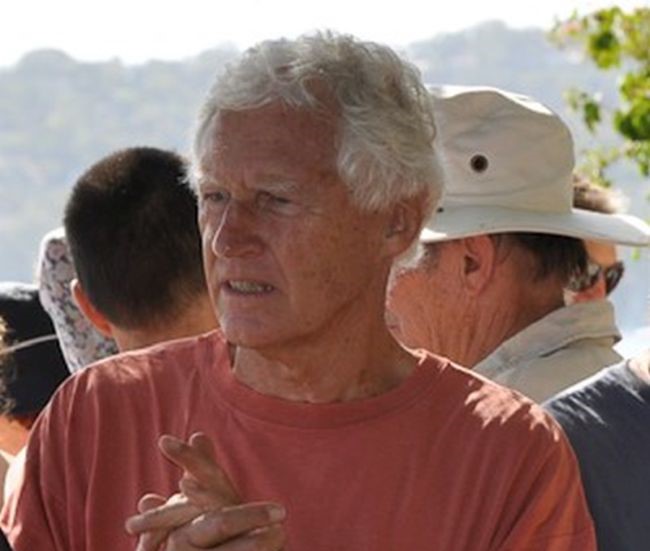
On 26 December we reported the sad news that Greg Roberts has died. Greg, along with his widow Louise, had lived on Scotland Island for 27 years and throughout that period contributed significantly to the offshore community. Greg’s family has asked me to announce that there will be a family service for Greg on Friday, 7 January at 11.30 am. The numbers attending will be limited, but a Zoom link will be available closer to the date for anyone who would like to join in online. The Zoom link will be published on the PON’s Facebook site once it is known: click here. The service will also be recorded and a link to the video will be made available as soon as possible, via the Facebook site as well as a subsequent edition of the PON. A celebration of Greg’s life is planned for Sunday, 30 January at 2 pm, to be held at the Royal Prince Alfred Yacht Club. There is also a planned procession of boats around Scotland Island, to be held the same morning. The family would like to invite anyone interested to join in the procession. Details concerning the celebration and the procession will be announced via the PON once they are known. If anyone has a fairly large boat that could be used to lead the procession and carry the family then that would be appreciated. Please contact Megan Sadler, Greg’s daughter-in-law, at meganmsadler@hotmail.com. Roy Baker 
Roy Baker
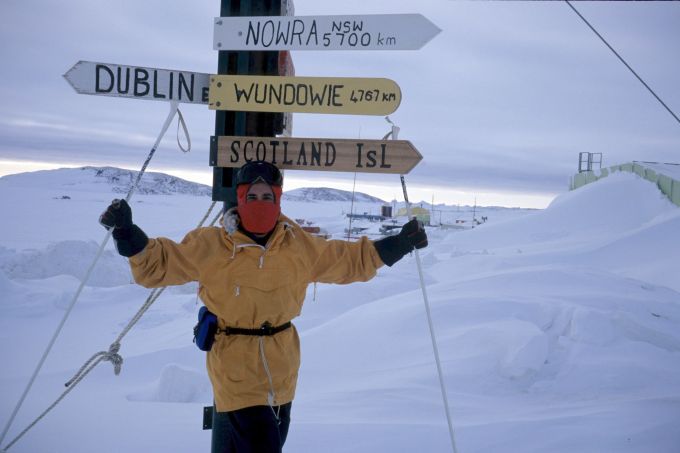
A few months ago I suggested a tenuous link between Scotland Island and the South Pole: Catherine Bouffier, who gave her name to Catherine Park, was the aunt of Frank Hurley, the photographer on the ill-fated 1914 Shackleton trans-Antarctic expedition. But for quite some time there was a much stronger connection: a sign on Antarctica pointing towards our island.
The sign was put there by Mariano Martinez, better known as Mario. He lived just above Carols Wharf between 1987 and 1999. An enthusiastic sportsman, Mario will be remembered by many islanders as the man who organised quadrathlons that involved kayaking to the Basin and cycling to Mona Vale.
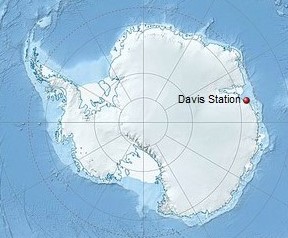 |
|
Map showing Davis Station on Antarctica
|
But in 1997 Mario spent 12 months at Davis Antarctic Station, one of three permanent bases and research outposts managed by the Australian Antarctic Division. It was during his stay there that Mario erected the sign pointing to Pittwater.
Mario, who worked at the Davis base as a senior electrical technician, describes his time on Antarctica as a ‘great adventure’. Certainly it’s not for the faint-hearted. Mario was dropped off by ship in the summer, when temperatures at the base hover around freezing point. But by August Davis temperatures typically range between minus 14 and minus 20, and can drop as low as minus 42. Added to that, the station experiences virtually no sunshine in June and July.
‘They spend more time preparing you psychologically than they do physically: that tells you something about what it’s like’, says Mario. He was stationed with three women and 15 men. ‘Maintaining good relations in conditions like that can be a challenge’, he explains.
Fortunately Mario, who has a great love for the outdoors, bonded with those with a similar taste for adventure. For instance, he and a colleague once set off across the sea ice to see how far they could go. But he couldn’t have made it to any of the neighbouring stations, the nearest being several hundred kilometres away.
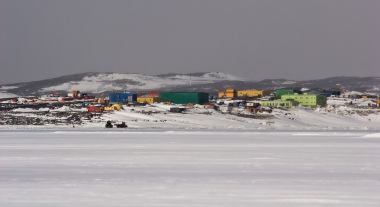 |
|
Davis Station, November 2005
|
Besides psychological training, Mario also had to learn how to survive away from base. For instance, part of a survival course required living in a ‘coffin-sized’ hole in the snow for two days.
But back at Davis, life was surprisingly comfortable. ‘We had a movie theatre, great food and plenty of good wine’, he recalls. ‘There wasn’t much suffering!’
These days Mario lives with his wife Marika in Mona Vale. Marika works in real estate and has recently handled the purchase of properties on the island, while Mario keeps in touch with a number of island friends. 
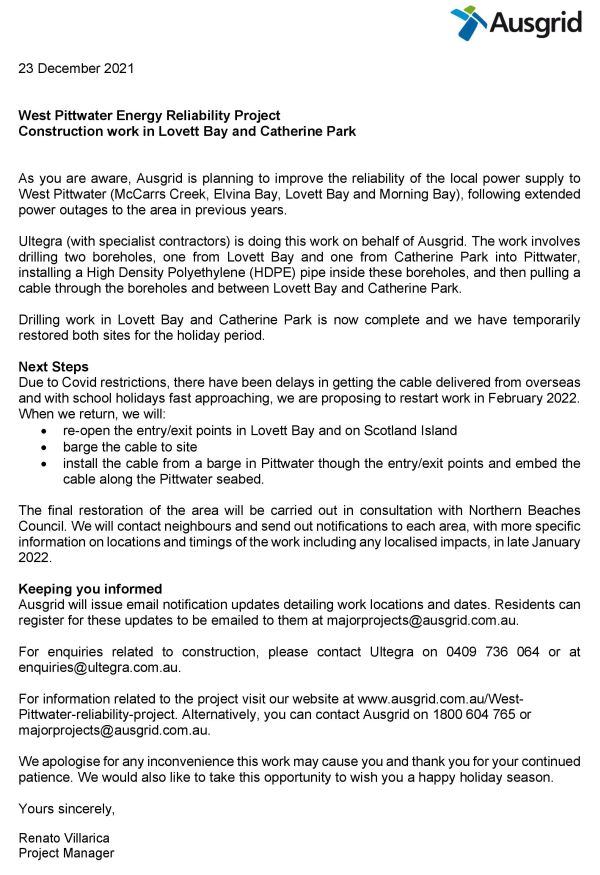

Catherine Park
Sunday 9 January, 10 – 12 noon
Sunday 23 January, 10 – 2 pm

Scotland Island Community Hall
Most Saturdays, 3 – 5 pm
Table tennis sessions have recommenced. Groups meet most Saturdays. Anyone over 12 is welcome, subject to prevailing COVID rules. Please bring a mask to wear indoors, although it may be removed during physical exercise.

64 Darley St, Mona Vale
Saturday 15 January, 10 am – 2 pm
Scotland Island Recreation Centre
Sunday 23 January, 2 – 4 pm

Scotland Island Recreation Centre
Thursday 20 January, 6 – 9 pm

Scotland Island Community Hall
Sunday 23 January, 2 – 4 pm
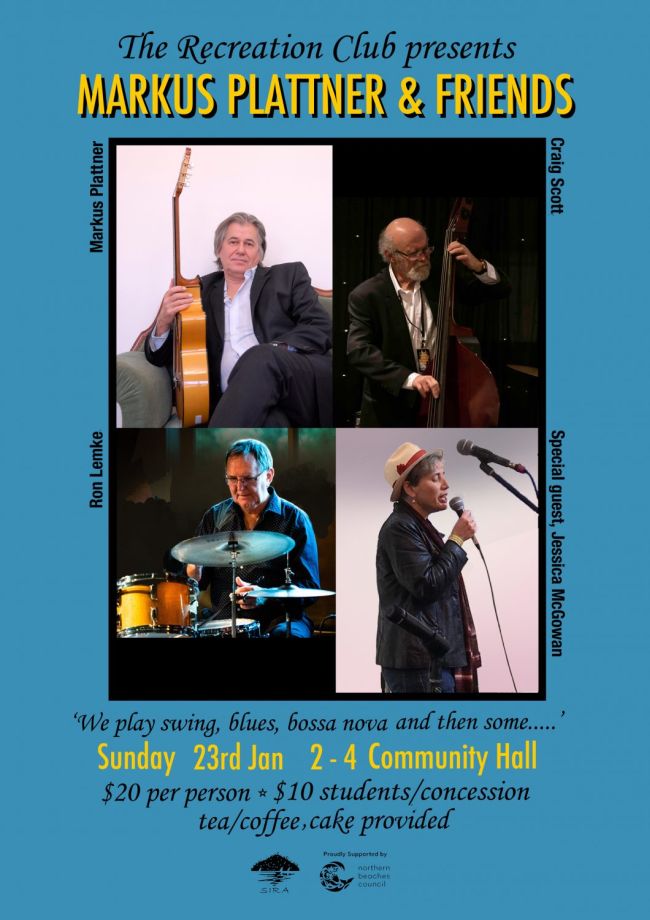
For tickets, click here. The Two Catherines café will remain open until 2pm. 
Scotland Island Community Hall
Saturday 29 January, 7 – 9 pm

Is there a cat lover out there who might like to rehouse my lovely black cat Zeus?
He is a softy, a gentle scaredy-cat who stays mostly indoors and sleeps a lot but does like people, sitting on knees and being stroked. He is 12 and despite living all his life with his tabby cat brother, he is now taking a lot of stress as the tabby is spending more time indoors and re-zoning his territory, which puts Zeus under strain. The vet says he is physically healthy but emotionally living in fear with the constant threat that he will be attacked. It is affecting his behaviour and his health.
If you would like to meet him and have a chat I’d be delighted. He needs a quiet home, no other pets and probably not children.
Please call Gail 0412767687

I’m an experienced, fully qualified teacher and education support worker (primary school) offering tutoring in all aspects of literacy over the summer holidays.
If you think your child would benefit from one-on-one tuition in reading, writing or general language skills and could do with a boost to their confidence before starting the new school year, please contact me for further information.
Helen Webster
Mobile: 0406347061
Missed out on a previous newsletter?
To Contribute
If you would like to contribute to this newsletter, please send an e-mail to the editor (editor@scotlandisland.org.au).
Subscription Information
To subscribe or unsubscribe, go to: http://www.scotlandisland.org.au/signup.
Follow the PON
The Online Local Contacts Guide
Click HERE to load
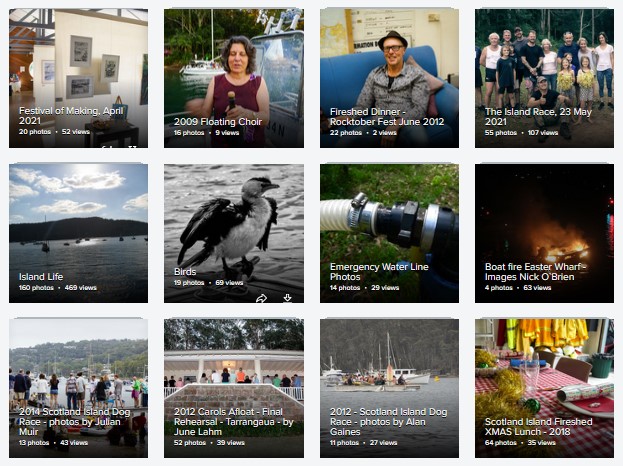
Updated June 2021
Festival of Making, April 2021
The views expressed in this newsletter are not necessarily the views of the Scotland Island Residents Association (SIRA), or the Western Pittwater Community Association (WPCA)
|


Leave a Reply
Want to join the discussion?Feel free to contribute!